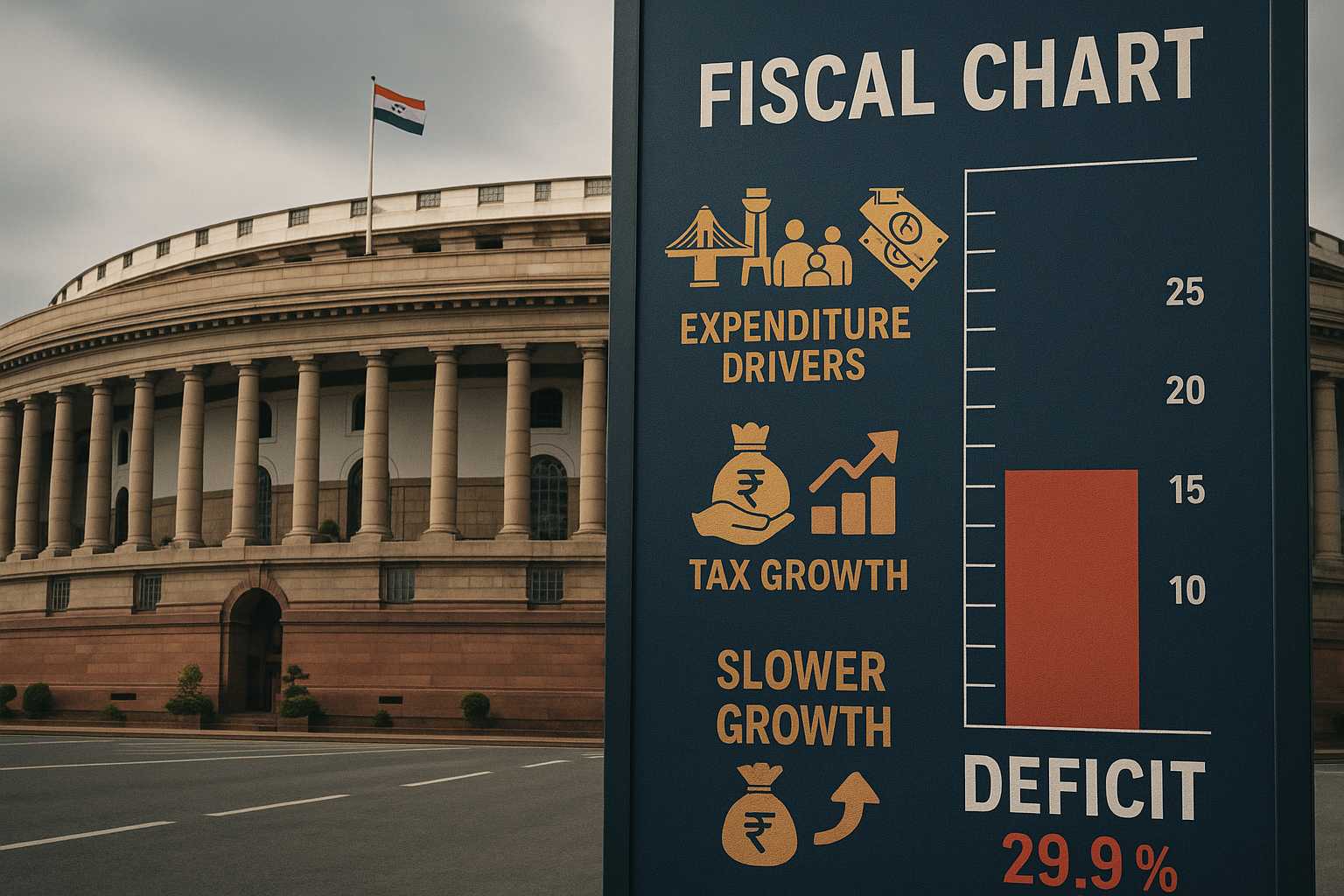The Centre’s fiscal deficit reached 29.9% of the full-year FY26 target by July 2025, reflecting higher expenditure outflows and moderate revenue collections in the first four months of the fiscal year. While the level remains in line with historical trends, analysts caution that tariff shocks, global headwinds, and subsidy pressures could complicate fiscal management in the coming quarters.
The government remains committed to fiscal consolidation, but balancing growth support with revenue stability will be crucial.
Why the Deficit Widened
Several factors contributed to the widening of the fiscal deficit early in FY26:
Higher Expenditure: Increased spending on infrastructure, welfare schemes, and subsidies.
Revenue Pressures: Slower-than-expected growth in direct and indirect tax collections.
Trade Shocks: U.S. tariffs and global uncertainties weighing on exports and customs duties.
This mix of pressures highlights the challenge of sustaining fiscal health while supporting growth.
Historical Context
Reaching nearly 30% of the target by July is not unusual, as government expenditure typically frontloads in the first half of the fiscal year. However, with global headwinds and domestic revenue uncertainties, the fiscal path for FY26 may require careful calibration of spending priorities.
Policy Perspective
The government has reiterated its commitment to a fiscal deficit target of around 4.9% of GDP for FY26. To stay on track, policymakers may rely on:
Disinvestment receipts and asset monetization to boost non-tax revenues.
Tightening subsidies to prevent overshooting expenditure.
GST and direct tax buoyancy from reforms to support collections in the second half.
The Reserve Bank of India’s stance on liquidity and interest rates will also play a role in managing the borrowing program.
Why This Matters
For Investors: Fiscal credibility influences bond yields, borrowing costs, and market sentiment.
For Businesses: Signals potential for policy adjustments in taxes and spending.
For Citizens: Shapes government capacity to fund welfare, infrastructure, and subsidies.
Maintaining fiscal discipline amid global uncertainty will be key to protecting India’s macroeconomic stability and credit outlook.












